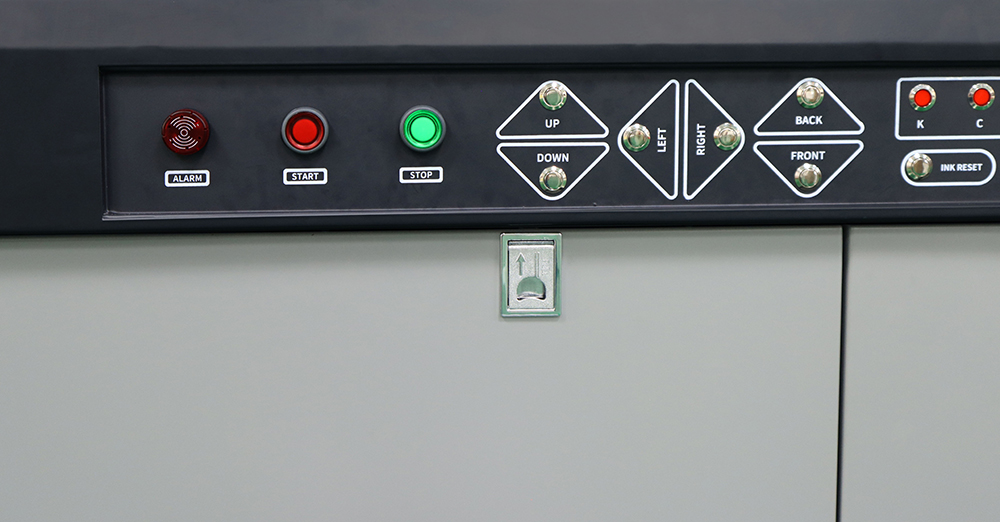The Role of UV Lamps in UV Flatbed Printing
The Role of UV Lamps in UV Flatbed Printing
In the realm of digital printing, UV flatbed printing has emerged as a game-changer, offering unparalleled versatility, precision, and efficiency. This technology has revolutionized various industries, including advertising, packaging, and decorative arts, by enabling the printing of high-quality images on a wide range of substrates such as glass, wood, metal, plastic, and even textiles. A crucial component that underpins the success of UV flatbed printing is the UV lamp—a technological marvel that plays a pivotal role in the curing process, thereby ensuring optimal print quality and durability. This article delves into the intricacies of UV lamps, exploring their function, types, advantages, challenges, and future prospects within the context of UV flatbed printing.

Understanding UV Lamps in UV Flatbed Printing
UV flatbed printers utilize ultraviolet (UV) light to instantly cure ink as it is deposited onto the substrate. This curing process is facilitated by UV lamps, which emit high-intensity UV radiation that triggers a photochemical reaction in the ink, transforming it from a liquid state to a solid in a fraction of a second. The result is a print that is not only dry to the touch immediately but also exhibits exceptional adhesion, durability, and resistance to fading, scratching, and chemical exposure.
Types of UV Lamps
UV lamps used in flatbed printing can be broadly classified into two categories: mercury-based lamps and LED lamps.
Mercury-Based Lamps: Traditional UV curing systems often employ mercury-vapor lamps, which contain mercury vapor that, when excited by an electrical current, emits UV radiation. These lamps are known for their high intensity and ability to cure inks quickly. However, they also have drawbacks, including a relatively short lifespan, the need for frequent bulb replacement, and environmental concerns due to mercury content.
LED Lamps: In recent years, LED-based UV curing systems have gained prominence due to their numerous advantages over mercury-based lamps. LED lamps offer longer lifespans, lower energy consumption, reduced heat output, and instant on/off capabilities, making them more environmentally friendly and cost-effective in the long run. Additionally, LED lamps emit UV radiation in a narrower spectrum, allowing for more precise control over the curing process and enabling the use of specialized inks for unique applications.
Advantages of UV Lamps in UV Flatbed Printing
Instant Curing: The most significant advantage of UV lamps is their ability to cure ink instantly, enabling fast turnaround times and immediate handling of printed materials without the risk of smudging or smearing.
Enhanced Print Quality: UV curing results in sharper images and more vibrant colors, as the ink is fixed onto the substrate immediately, preventing bleeding or spreading.
Versatility: UV flatbed printers can accommodate a wide array of substrates, including those that are heat-sensitive or difficult to print on with traditional methods, thanks to the non-thermal curing process of UV lamps.
Durability and Resistance: UV-cured prints exhibit exceptional resistance to fading, scratching, and chemicals, making them ideal for outdoor applications and products requiring long-term durability.
Environmental Benefits: LED UV lamps, in particular, offer reduced energy consumption and a longer lifespan, translating to lower carbon emissions and reduced waste from frequent bulb replacements.
Challenges and Considerations
While UV lamps offer numerous advantages, there are also challenges and considerations to be aware of:
Initial Investment: The adoption of UV flatbed printing technology, especially with advanced LED UV systems, requires a significant initial investment.
Operator Safety: UV radiation can be harmful to human skin and eyes. Therefore, proper safety measures, including the use of protective gear and shielding, are essential.
Heat Management: Despite lower heat output, some UV lamps can still generate considerable heat, necessitating effective heat management systems to prevent overheating of the printer and substrates.
Ink Compatibility: Not all inks are compatible with UV curing processes. Specialized UV-curable inks must be used, which may limit color options or increase ink costs.
Future Prospects
As technology continues to advance, the role of UV lamps in UV flatbed printing is poised for further innovation and optimization. Ongoing research and development efforts are focused on enhancing lamp efficiency, prolonging lifespan, and reducing environmental impact. The integration of smart technologies, such as IoT-enabled monitoring systems, promises to optimize lamp performance and maintenance schedules, further improving operational efficiency.
Moreover, the trend towards more sustainable printing practices is driving the adoption of LED UV lamps, which align with eco-friendly goals due to their energy efficiency and reduced environmental footprint. As LED technology matures, we can expect even greater advancements in terms of curing speed, ink compatibility, and print quality.
In conclusion, UV lamps are the linchpin of UV flatbed printing, enabling the production of high-quality, durable prints on a diverse range of substrates. From traditional mercury-based lamps to cutting-edge LED systems, these lamps have evolved significantly, addressing the needs of various industries while also presenting new opportunities for innovation and sustainability. As technology progresses, the role of UV lamps in UV flatbed printing will only continue to grow, shaping the future of digital printing and expanding the boundaries of creative possibilities.
